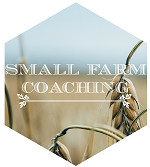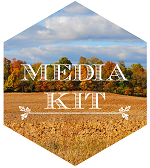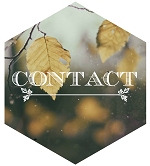It has come to my attention that I have not done a book review in a long, long time... So I'm setting out to remedy the situation!
For months upon months I have had three fellow goat raisers tell me I needed to buy Pat Coleby's book, 'Natural Goat Care'. They all said I would love it. My response was always, "Sure, yeah, someday maybe I'll get it. But at $25.00 for a USED copy, I don't see that happening any time soon!" And to be honest, I wasn't really interested in reading it. I knew that Pat was more into using minerals to help animals and I've always been a bit skittish about that route. Between hearing horror stories of overdosing a mineral, the challenge in just finding the minerals, and seeing that all the animals got their needed amount, well, it made me want to just stick to my herbs and feign ignorance on the matter. I know, I'm so grand.
But my friends wouldn't give up. "You need to buy Pat's book!" "Just get it on Amazon!" "You'll love it, I promise!" Well thank heavens for their persistence. I ended up with three gift cards for my birthday (best gift possible, in my mind!) and I selfishly bought myself books with all the money. This girl doesn't need flowers to be won over; a $2.00 book from Goodwill will do just as well (cow-sized silicon inflations also have the same effect). The book titles were all similar in topics, 'You Can Farm', 'The Teamsters Guide to Oxen', 'Goat School', and of course, 'Natural Goat Care'. Yep, I finally bought the book.
And guess what; I LOVE it!
Natural Goat Care
By Pat Coleby; author of Natural sheep care, natural horse care, & natural cattle care.
Rating: 10+
Readability: 8
Impact: 10+++ (in other words, off the wall)
Recommend it? Yes!
Read it again? Oh yes... This book never strays from my bedside shelf.
What to expect: Pat Coleby touches on just about every subject that relates to goats and shows in a clear form how all of today's problems with our caprines are stemming from mineral deficiencies. Our lands are eroded and poor; years upon years of mismanagement, chemicals, and natural disasters have left us with land that is quite literally "dirt"; the lack of minerals left in our soil is harmful to everyone; humans, animals, and plants alike. Mineral deficiencies cause an animal to have a poor immune system and cause imbalances of all sorts. Thankfully, getting our goats nutritionally balanced is easier than we think! With simple directions, Pat skillfully teaches readers how they can use minerals to heal and maintain their herds of two goats, or two hundred.
My thoughts on it: So yes, I had to eat some Humble Pie after reading through this the first time. My friends were right, this book is hands-down *awesome*! In short, if you have goats, or if you are thinking about getting goats, then buy this book. Period. Pat does go over more than just using minerals on goats, although the majority of the book is indeed about that. But other topics are breeds, choosing a breed, choosing land, using herbs, goat care, breeding, kidding, showing, meat goats, training draft goats (just a tiny bit on that part), fiber goats, and tanning goat hides. You may notice that I only gave the book a rating of 8 in the readability section... I did that because, 1. it IS a little text-booky and some may find it on the dry side. And 2. Pat is from Australia and the entire book is based on Australian settings. But I still found it extremely applicable despite the - um - distance between us. ;)
One thing that really excited me was her usage of copper. I've always heard bad things about giving copper to goats (although they do need higher amounts of it than most livestock), so I resorted to using kelp meal and copper boluses to my goats (copper bolus: imagine a ridiculously huge pill that has copper inside it). However, the boluses never did much for my goats, and the kelp was so expensive that I wasn't always able to supply it year around. What's a girl to do? In Pat's book, she recommends feeding 1 teaspoon of copper sulfate to each goat per week. I loved it that she gave such a clear dosage. So when a friend gave me some of his copper sulfate I eagerly tried it out on the girls (goats, that is). I mixed the copper in their feed and was amazed at the reactions! Ivy (who is brown) and Heidi (who is white) wouldn't touch the copper at all. They both looked great and I really didn't think they needed much copper anyway. Pat mentions that black/dark colored goats need 6x's more copper than white/light colored goats, which I thought was intriguing. Sombrita (I still had her at the time) and Metty both showed signs of being copper deficient: their black coats were a dull brown with orange trim on their legs and stomach. Their ears were also a dull orange hue where they used to be black. Metty naturally has orange markings on her, but a copper deficiency will give the tips of each hair a dull cast. A black goat should be BLACK. I mixed the copper in Sombrita and Metty's feed, and stood back... They DEVOURED their grain! Metty has never liked her grain, and I'm always trying to figure out a new way to get her to eat it, but with the copper in there she ate as if it was her last meal. Holy kohlrabi. The next day was the clincher: the orange cast on them was almost completely gone. Sombrita was so black that she looked blue on some areas. Their milk yield also increased noticeably. I was hooked. Someone sign me up and hand me some minerals!
Pat has five favorite things to provide goats with the minerals they need. The first is kelp meal. A lot of people ask me if they should give store bought minerals along with the kelp meal and my answer is always, 'NO!' Kelp meal is cram packed with 60 minerals, 21 amino acids, 12 vitamins, and it boosts the immune system, improves feed utilization, increases milk and meat production, reduces or eliminates (depending on each animal) breeding problems, reduces or eliminates internal parasites, reduces the chance of mastitis, and just plain makes the animals look stunning. It's good stuff and worth every penny.
So kelp meal is her first recommendation... Her other favorites are dolomite, sulfur, copper sulfate, and apple cider vinegar. If you supply these five things to your goats, then you'll already be ahead of the game. I thought it was interesting that she used dolomite... I had always heard to give limestone to animals, but she says that doing so will cause a severe imbalance of magnesium. The dolomite is the correct ratio of calcium to magnesium which keeps the animal balanced and able to absorb the nutrients. If there is too much of one, then the animal will be unable to absorb the other and the result is a sick goat. The sulfur and copper are both in very small amounts, but are necessary to keep the animals healthy and able to absorb everything to its maximum potential. And of course the ACV (apple cider vinegar) is awesome. Kelp meal and ACV have always been my two "miracle workers" as they pretty much fix everything. You can read about the benefits of ACV by clicking HERE.
Now the question that everyone, including myself, asks: "Where can I buy these minerals?"
That one took a while for me to figure out. My first recommendation is to check your local feed store and see if they have anything. One thing you DO need to check is if the dolomite has lead in it. Apparently most feed stores carry a cheap type of dolomite which does indeed have lead in it. Yuck. My feed store didn't know, but seeing as their price was only $10.00 for a 50 lb. bag, I have my suspicions. Thankfully, I was pointed to a great website that has all of the minerals that Pat mentions, and they even have a pre-blended mix of Pat's recipe that calls for dolomite, kelp, sulfur, and copper sulfate! Oh and their dolomite is the lead-free stuff, too. Very nice. They have the fun name of 'The Jolly German', and you can find their website by clicking HERE. Their prices are a little, well, pricey; but since you use such a tiny amount of the minerals at a time, I am happy to pay the price and know that I'm getting good quality minerals and I can find everything I need without leaving my computer chair. LOL. ;)
So, now that I've given what sounds like a sales pitch (what can I say, I love marketing!) I will finish up with this: If you have goats, or are thinking about getting some, Buy Pat Coleby's book!









6 comments:
Ok, so I have a question about the copper sulfate... I've been struggling with a copper deficiency with the girls, Eclair especially for awhile, so I gave them boluses about 8 weeks ago. They already have a very small amount in their feed, something like .06 lbs per ton and a half of feed. But you've just convinced me to switch to the sulfate. Should I wait for awhile until I give the copper sulfate in case there are still rods left from the bolus? And I would think the tsp. a week dosage would still be safe since that's hardly any in their grain, right?
Hmm, I don't know how long the boluses hang around, but it *seems* that if it was 8 weeks ago, the it should be okay. Sombrita had been bolused right before I got her, so that put her at 9-10 weeks when I gave her the copper sulfate.
And yes, the 1 tsp. should be fine in their feed; like you said, there's already barely any in there. :) I usually mix a 1/2 tsp. in their grain in the morning and then again at night so as to hide it better and make sure that it gets eaten.
Dolomite will also counteract a copper sulfate overdose (as will Vit C) so if you're concerned about Eclair and the bolus, you could always get the dolomite and the copper at the same time just to be safe.
Great info and not a suprise. I'm sure most of our produce in the U.S. is really low nutrient wise to what it could be...
Thanks for sharing this info-I can't wait to buy a copy for myself. My future goat herd thanks you too.
Heather in PA
I will add this to my winter reading list!
The copper boluses we have say they are effective for 6 months???
I am reading this book, too! It's fascinating. I had been wondering why the girls are all of a sudden eating tree bark. Now I know.
Thanks so much for that link. I went right there and ordered the copper and kelp for them.
Post a Comment